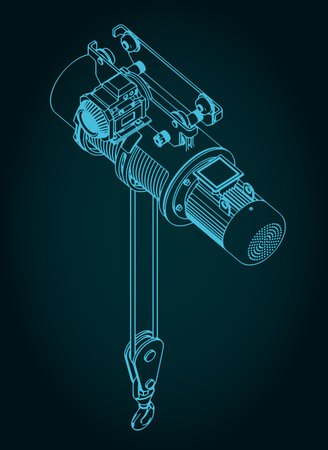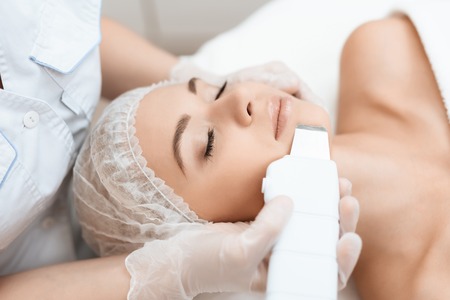Introduction to CO2 Laser Skin Resurfacing
Laser skin resurfacing, particularly with CO2 technology, has become a cornerstone in contemporary dermatological care across the UK. As aesthetic standards evolve and the demand for minimally invasive procedures rises, CO2 laser treatments offer a sophisticated solution for rejuvenating the skin. This advanced approach utilises targeted beams of light to carefully remove damaged outer layers of skin, promoting collagen regeneration and improving overall texture and tone. In British dermatology clinics, CO2 laser resurfacing is widely recognised for its efficacy in addressing a range of concerns, from fine lines and wrinkles to acne scarring and sun damage. With an emphasis on both safety and results, this treatment exemplifies how cutting-edge science is seamlessly integrated into daily practice, meeting the expectations of patients seeking effective and reliable solutions for skin health and appearance.
2. How CO2 Laser Technology Works
The carbon dioxide (CO2) laser is a highly sophisticated tool widely used in skin resurfacing treatments throughout the UK. This technology operates by emitting a concentrated beam of infrared light, typically at a wavelength of 10,600 nanometres. The energy generated by the CO2 laser is readily absorbed by water molecules within skin cells, which leads to rapid heating and controlled vaporisation of targeted tissue. This process is referred to as “ablation”.
The Science Behind the CO2 Laser
CO2 lasers deliver energy in short, intense pulses or continuous beams, allowing for precise control over how deeply the laser penetrates the skin. The ablation removes the outermost layers of damaged or aged skin, while simultaneously triggering a natural healing response in the underlying dermis.
Cellular Interaction
When the laser interacts with skin tissue, several events occur at the cellular level:
| Laser Effect | Cellular Response |
|---|---|
| Thermal Ablation | Vapourises superficial skin cells and disrupts damaged structures |
| Controlled Micro-injury | Stimulates fibroblasts to produce new collagen and elastin fibres |
| Wound Healing Cascade | Initiates regeneration of healthier, smoother skin tissue |
| Photothermal Effect | Targets water in cells, minimising impact on surrounding healthy tissues |
Pulsed and Fractional Modes Explained
Modern CO2 lasers used across British clinics often operate in pulsed or fractional modes. Pulsed delivery allows for brief exposure times, reducing heat damage to surrounding tissues. Fractional CO2 systems create microscopic columns of treated skin (known as microthermal zones), leaving intervening areas untouched. This approach encourages faster recovery and lowers risk of complications compared to traditional full-field ablation.
Why Precision Matters in British Clinical Practice
The ability to finely tune energy output and treatment depth ensures that practitioners can address a variety of concerns—from fine lines to deep scars—whilst respecting individual skin types and safety standards prevalent across the UK. Ultimately, the science and technology behind CO2 laser resurfacing combine to offer an effective means of revitalising the skin at both superficial and structural levels.

3. Benefits Specific to British Skin Types
Laser skin resurfacing with CO2 has gained popularity in the UK due to its remarkable adaptability to a wide range of skin types commonly found across the British population. The UK is home to a diverse mix of skin tones, from very fair (Fitzpatrick I) to olive and medium-brown complexions (Fitzpatrick III-IV), all of which require special consideration when it comes to advanced dermatological treatments. Understanding the unique needs of these skin types ensures both safety and optimal results for patients seeking rejuvenation.
Tailored Technology for Fair and Sensitive Skin
Fair-skinned individuals, who are particularly prevalent throughout Britain, are often more prone to sun damage, redness, and fine lines. CO2 laser resurfacing is especially well-suited for these concerns, as it can be precisely calibrated to minimise risk while effectively targeting superficial imperfections. The controlled depth of penetration reduces the likelihood of pigmentation changes, making it a preferred option for those seeking a refreshed yet natural outcome.
Addressing Concerns for Olive and Medium-Brown Complexions
The UK’s increasingly multicultural society means that clinics frequently encounter patients with olive or medium-brown skin. Historically, these skin types faced higher risks of post-inflammatory hyperpigmentation following aggressive treatments. However, advances in CO2 laser technology now allow practitioners to customise settings, reducing thermal injury and promoting even healing. Patients with these complexions can expect smoother texture, improved tone, and reduced scarring when treatment protocols are meticulously followed by experienced professionals.
Expected Results Across British Skin Types
Regardless of individual skin type, most British patients report firmer, brighter, and more youthful-looking skin after undergoing CO2 laser resurfacing. Fine lines, acne scars, sun spots, and uneven pigmentation are noticeably diminished. Importantly, practitioners in the UK place strong emphasis on post-procedure care—such as adequate sun protection and moisturisation—to support optimal recovery and maintain long-lasting results. This patient-centred approach ensures that the benefits of CO2 laser technology are accessible and effective for the full spectrum of British skin types.
4. What to Expect Before, During, and After Treatment
Preparing for CO2 Laser Skin Resurfacing
Proper preparation is essential to ensure optimal results and minimise potential risks associated with CO2 laser skin resurfacing. Patients in the UK are typically advised to attend a thorough consultation with their practitioner, where medical history, skin type, and expectations are discussed. Common pre-procedure recommendations include:
| Preparation Step | Details |
|---|---|
| Avoid Sun Exposure | Stay out of direct sunlight and use broad-spectrum SPF for at least 4 weeks prior. |
| Medication Review | Inform your clinician about all medications; some (like isotretinoin) may need to be stopped. |
| Skin Priming | Topical retinoids or bleaching creams may be prescribed to enhance results and reduce pigmentation risk. |
| No Smoking | Cease smoking at least 2 weeks before treatment to aid healing. |
The Procedure: What Happens on the Day?
On the day of your CO2 laser treatment, the process is straightforward yet highly controlled by your British clinical team:
- Cleansing: The skin is thoroughly cleansed to remove oils and impurities.
- Anaesthesia: Local anaesthetic cream or injections are applied for comfort; sedation may be considered for larger areas.
- Treatment Application: The CO2 laser device is used to deliver targeted energy across the planned area, with real-time adjustments for optimal precision.
- Soothe & Protect: A cooling ointment or sterile dressing is applied post-laser to support healing and reduce discomfort.
Aftercare: Post-Treatment Guidance from a UK Perspective
Post-procedure care is vital for recovery and achieving desired outcomes. Your practitioner will provide tailored advice based on your skin type and treatment depth, but standard aftercare typically includes:
| Aftercare Instruction | Rationale & Tips |
|---|---|
| Avoid Sun Exposure | The skin will be highly sensitive; use high-factor sunscreen and wear hats outdoors. |
| Cleansing & Moisturising | Gently cleanse twice daily using lukewarm water and apply prescribed emollient creams to maintain moisture barrier. |
| Avoid Picking/Touching Treated Area | Let any crusts or scabs fall off naturally to avoid scarring or infection. |
| Pain Management | Mild discomfort is common; over-the-counter pain relief (e.g., paracetamol) may be recommended by your clinician. |
| Follow-up Visits | Your practitioner will schedule follow-ups to monitor healing and address concerns promptly. |
Typical Recovery Timeline in the UK Setting
| Time Frame Post-Treatment | What to Expect |
|---|---|
| First 24-72 hours | Redness, swelling, possible oozing—keep area clean and protected. |
| Days 4-7 | Crusting forms as new skin develops underneath. |
| Week 2 Onwards | Redness fades gradually; normal skincare routines may be slowly resumed under guidance. |
Your British Clinical Team’s Role
The multi-disciplinary approach adopted in UK clinics ensures you receive evidence-based advice throughout every stage. Open communication with your healthcare provider is encouraged—don’t hesitate to raise queries about your healing process or aftercare recommendations. With attentive preparation, expert procedure delivery, and diligent aftercare, you can look forward to smoother, healthier-looking skin following CO2 laser resurfacing.
5. Risks, Safety, and Regulations in the UK
CO2 laser skin resurfacing is a clinically proven method for skin rejuvenation, but like all medical and cosmetic procedures, it carries potential risks and side effects. Understanding these risks and the robust regulatory framework in the UK is essential for anyone considering this advanced treatment.
Common Side Effects and Risks
The most frequently encountered side effects include redness, swelling, mild discomfort, and a sensation similar to sunburn immediately following treatment. In some cases, patients may experience temporary hyperpigmentation or hypopigmentation, as well as mild scabbing or peeling during the healing process. More serious but rare complications can include infection, scarring, or persistent changes in skin colour. It is crucial that patients follow post-procedure care instructions meticulously to minimise these risks.
Risk Mitigation: The Importance of Qualified Practitioners
In the UK, only practitioners with appropriate training and qualifications should perform CO2 laser resurfacing. Clinics are required to adhere to strict protocols regarding patient assessment, treatment planning, and aftercare. Detailed pre-treatment consultations help identify any contraindications such as active infections, certain medications, or underlying health conditions that could increase the risk of adverse outcomes.
Safety Protocols and Patient Protection
Clinics across the UK employ state-of-the-art equipment that complies with safety standards set by bodies such as the Care Quality Commission (CQC) and The British Association of Dermatologists. Protective eyewear, calibrated devices, and sterile environments are standard practice. In addition, practitioners must provide clear information about realistic results and potential complications so patients can make informed decisions.
UK-Specific Regulations
The UK government has implemented robust regulations to ensure patient safety in non-surgical cosmetic procedures like CO2 laser resurfacing. Regulatory oversight by organisations such as the CQC ensures clinics maintain high standards of hygiene, staff competency, and equipment maintenance. Additionally, advertising standards enforced by the Advertising Standards Authority (ASA) prevent misleading claims about treatment outcomes.
By choosing a reputable clinic regulated under UK law, patients can have confidence that their safety is prioritised at every stage—from consultation to aftercare—making CO2 laser resurfacing a safer option for those seeking effective skin rejuvenation.
6. Choosing a Qualified UK Practitioner
When considering Laser Skin Resurfacing with CO2, selecting the right clinic and practitioner is crucial to ensure both safety and optimal results. In the UK, patients are advised to seek treatment exclusively at facilities registered with the Care Quality Commission (CQC), the independent regulator of health and social care in England. CQC registration guarantees that clinics meet stringent standards for cleanliness, infection control, equipment maintenance, and staff qualifications.
Understanding CQC Registration
CQC-registered clinics undergo regular inspections and must adhere to strict protocols designed to protect patient welfare. Before booking your consultation, verify the clinic’s status on the official CQC website. This step helps assure you that your chosen provider operates within established guidelines and is subject to ongoing regulatory oversight.
Verifying Practitioner Credentials
In addition to confirming CQC registration, it is essential to check that your practitioner holds appropriate certifications in laser treatments and dermatological procedures. In the UK, reputable practitioners often hold membership or accreditation from professional bodies such as the British Association of Dermatologists (BAD) or the British College of Aesthetic Medicine (BCAM). Don’t hesitate to ask about your practitioner’s training, experience with CO2 laser technology, and participation in continuing professional development.
Patient-Centred Considerations
A qualified practitioner will conduct a thorough consultation, discussing your medical history, skin type, expectations, and potential risks associated with CO2 laser resurfacing. They should provide transparent information about the treatment process, aftercare requirements, and possible side effects. A trustworthy clinic will also have robust policies for managing complications and clear lines of communication for post-procedure support.
Key Takeaway: For safe and effective Laser Skin Resurfacing with CO2 in the UK, always choose a CQC-registered clinic staffed by certified practitioners with demonstrable expertise in advanced laser treatments. This ensures not only compliance with national standards but also peace of mind throughout your aesthetic journey.

